Antimicrobial para-rubber gloves were developed by a student team from the Department of Chemical Engineering at KMUTT, under the guidance of Dr. Yeampon Nakaramontri, a lecturer from the Department of Chemistry, Faculty of Science. The all-female team consists of Piyachat Siammai, Pronpailin Lippanon and Phatcharin Porat.
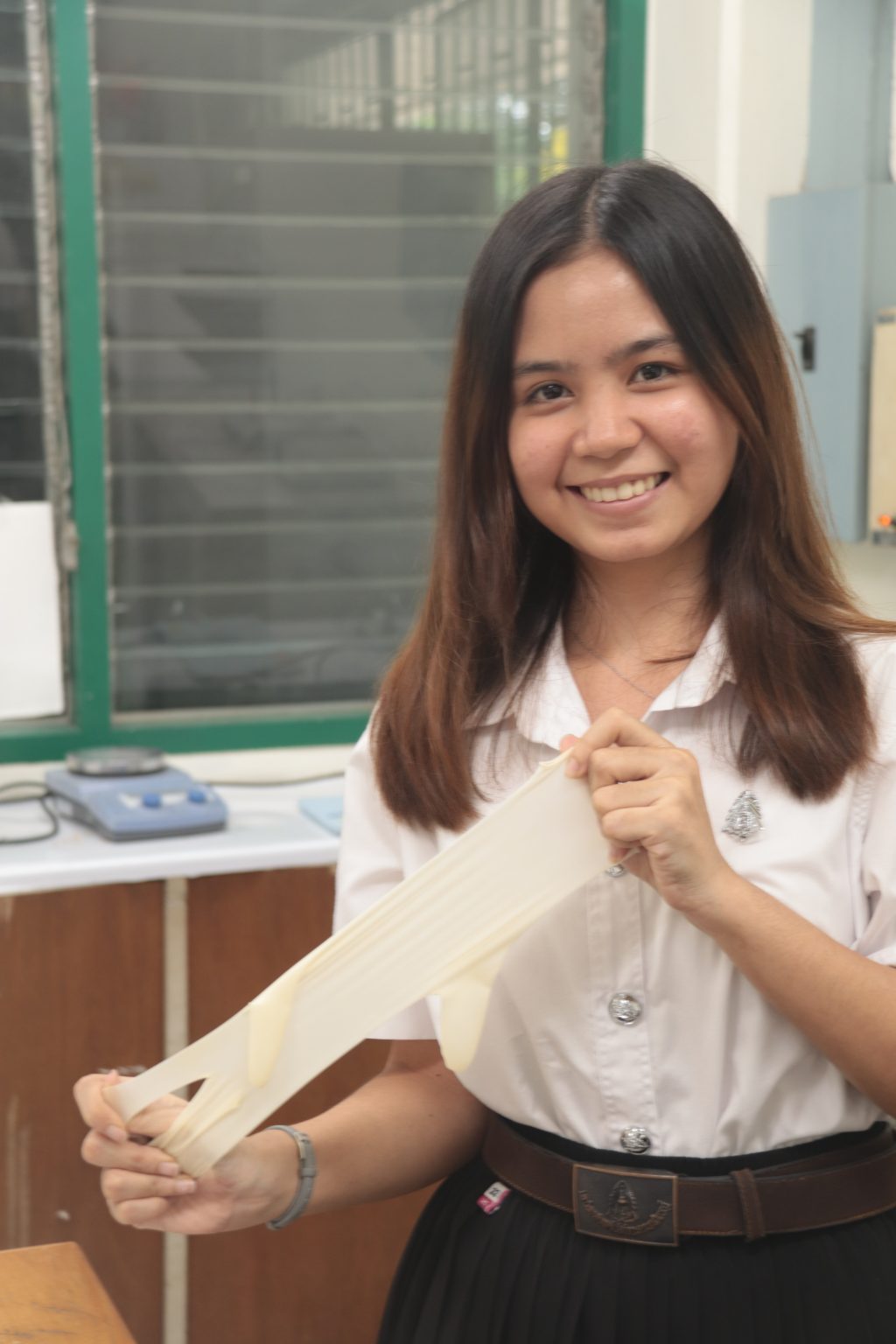

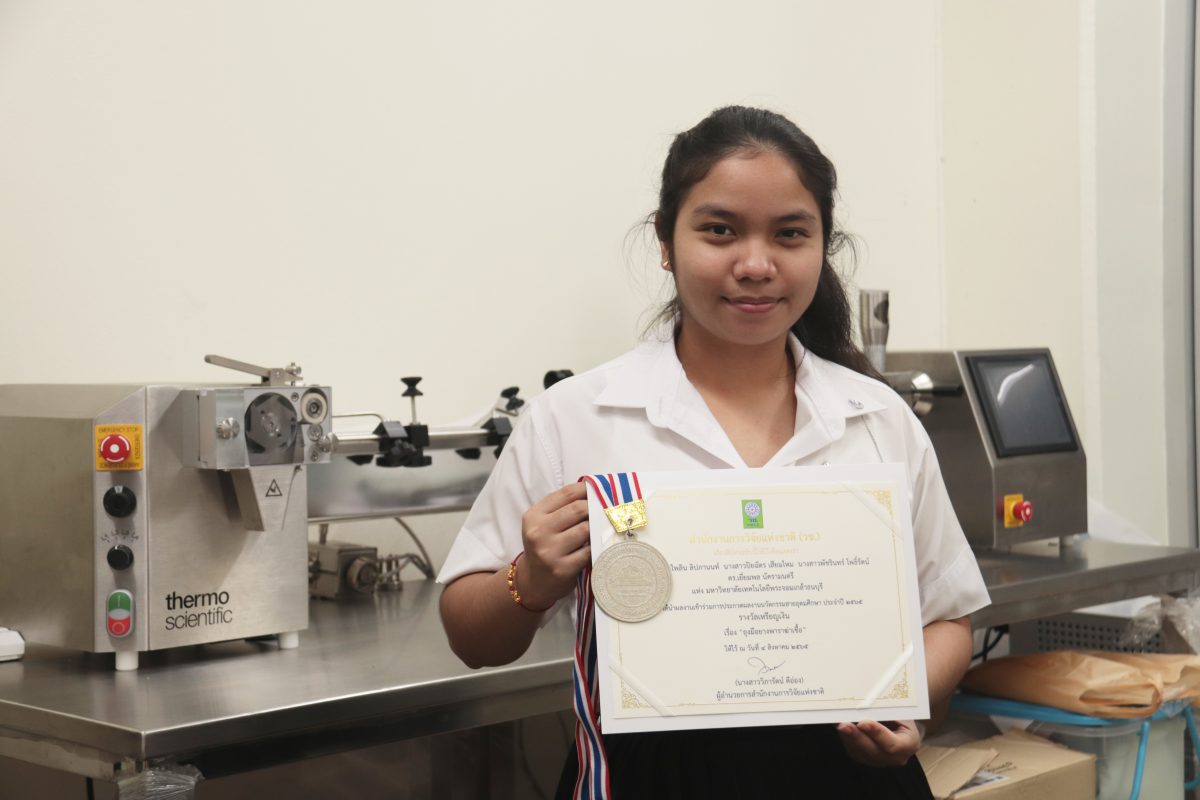
The innovation originated from the research conducted by Dr. Yeampon Nakaramontri, who has been spearheading numerous rubber research and development projects at KMUTT. Through a collaboration with Phramongkutklao College of Medicine, Dr. Yeampon formulated a rubber compound that incorporates zinc oxide, effectively imparting antimicrobial properties against both gram-positive and gram-negative bacteria, viruses, and certain antibiotic-resistant pathogens.
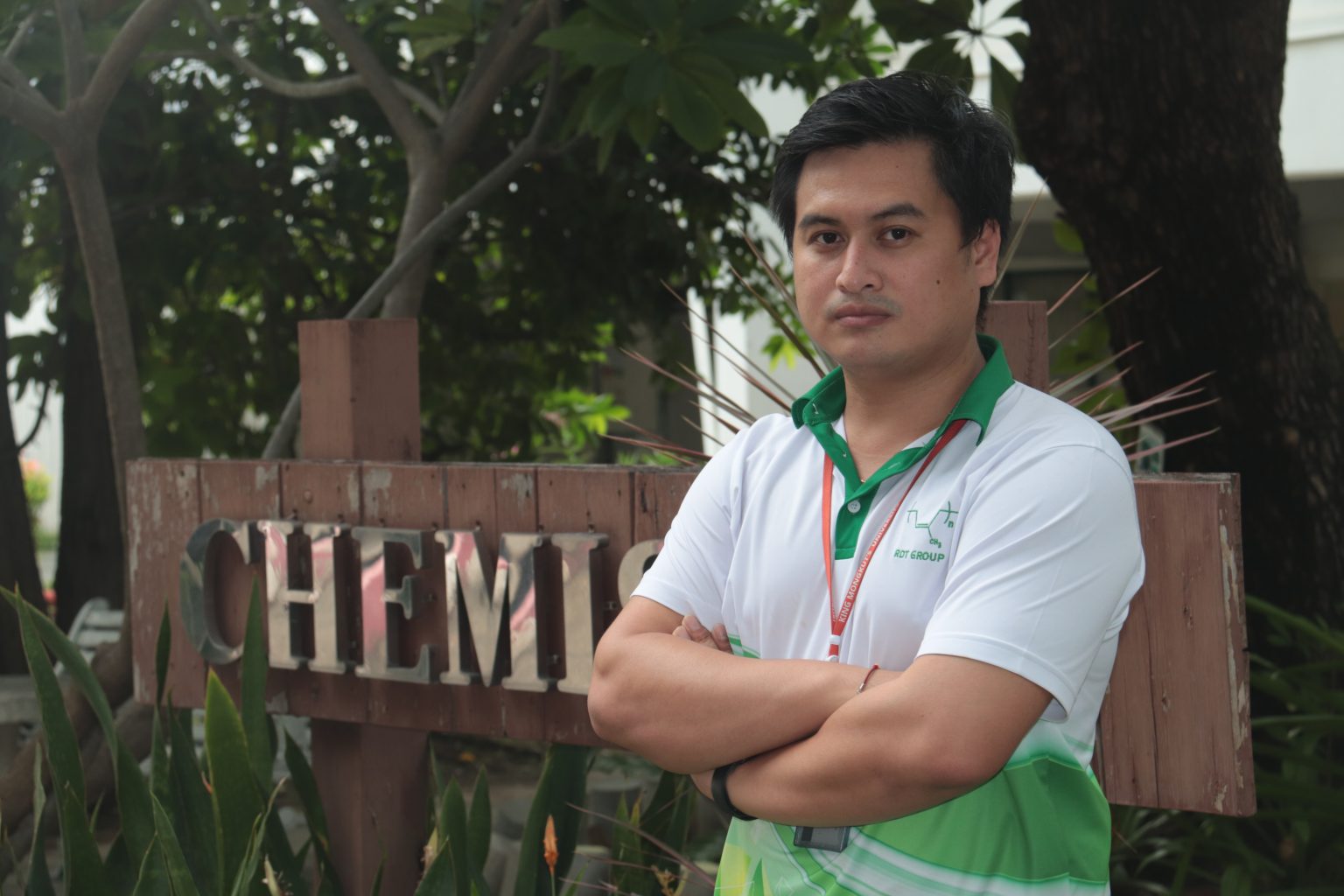
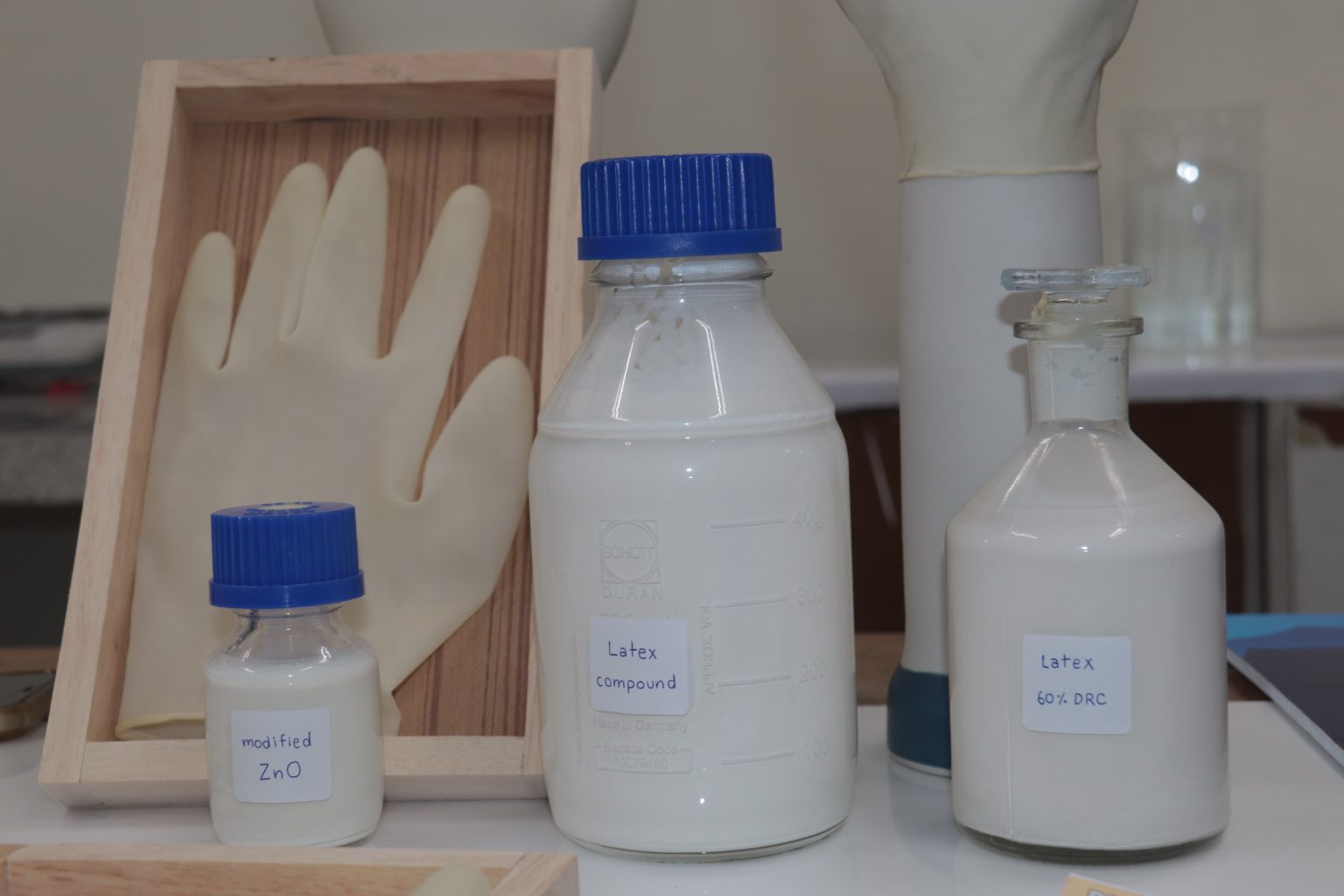
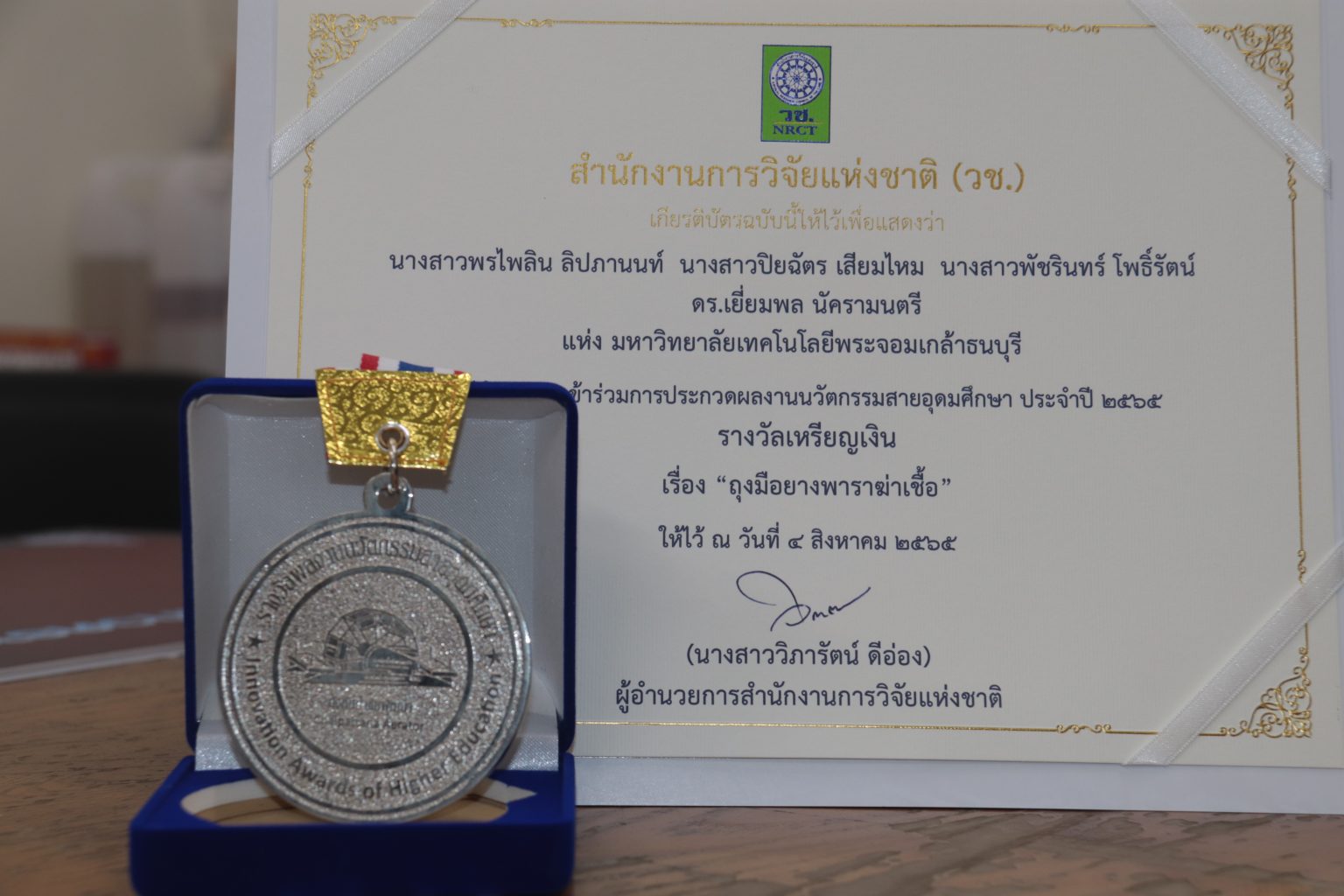
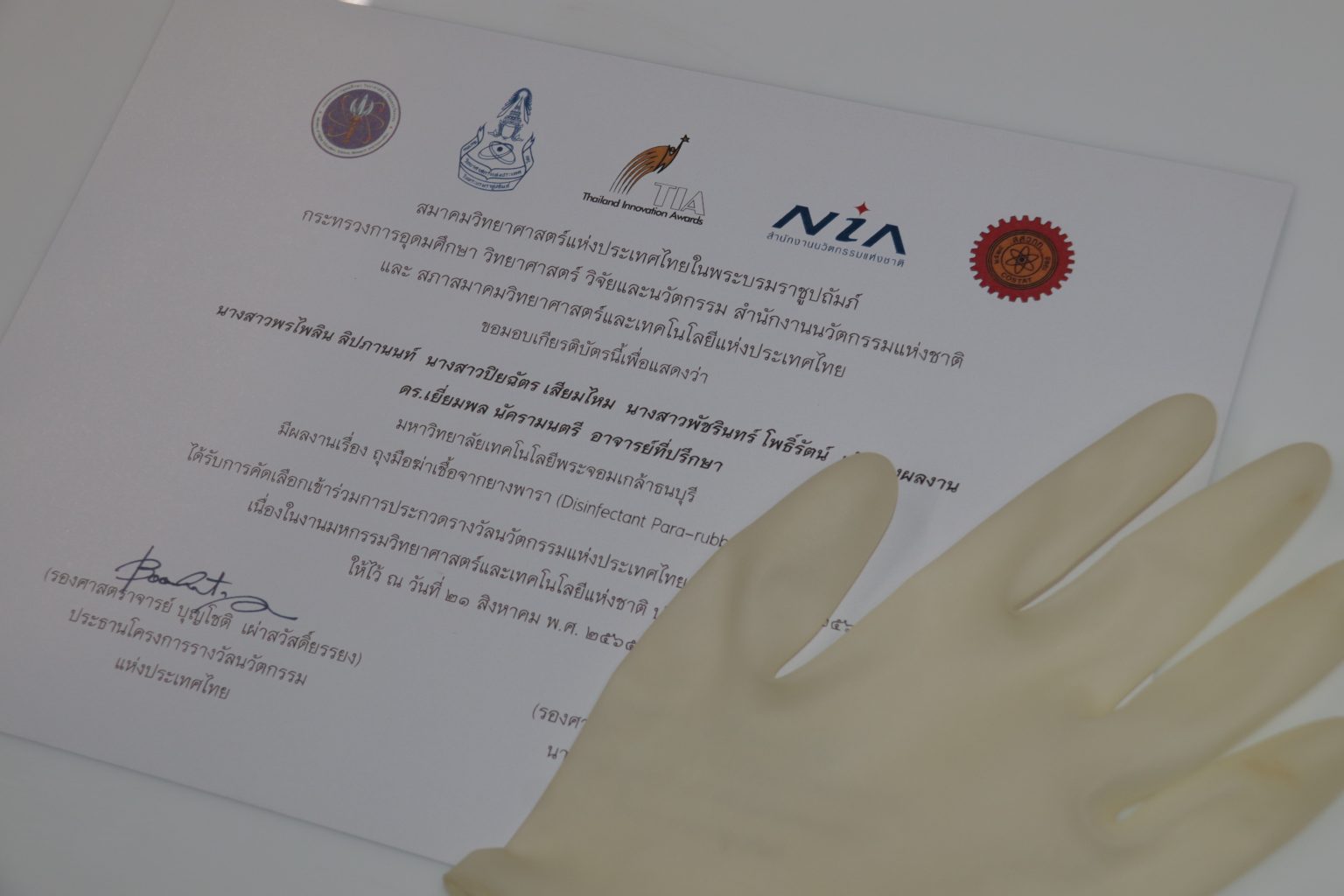
Phatcharin reveals that the team became interested in using this rubber compound because of the existing incorporation of zinc oxide, which enhances its antimicrobial properties. This unique attribute allows the compound to be transformed into gloves featuring built-in antimicrobial technology, distinguishing them from other types of antimicrobial rubber gloves that rely on external coatings. Consequently, the student team embarked on developing a manufacturing process for these antimicrobial rubber gloves. The outcome is a remarkable pair of gloves known for their durability and tear resistance. As a testament to their innovation, they were honored with a Silver Medal (in the health innovation category) at a higher education innovation contest organized by the National Research Council of Thailand on August 4, 2022.
Empowered by their first award, the team decided to advance to the national arena—the Thailand Innovation Awards (TIA) 2022, organized by the National Innovation Agency (NIA). Piyachat expresses that the team’s motivation for entering the TIA competition was to expand their horizons and improve their skills, particularly in marketing, given TIA’s emphasis on both scientific and marketing aspects. They believed that their creation had the potential to be transformed into a profitable venture, owing to its exceptional effectiveness against a wide spectrum of pathogens and its competitive production cost.
In preparation for the TIA competition, the team dedicated their efforts to crafting a comprehensive business plan. They conducted a thorough market analysis, examining both international and domestic demand for antimicrobial rubber gloves, in order to identify potential market shares for their product and determine the necessary production capacity. Investment costs were calculated, taking into account factors such as production capacity, machinery, labor, and utilities. Piyachat explains, “Despite our lack of business background, we exerted tremendous effort over four consecutive months, seeking guidance from our advisor and collaborating with colleagues, to develop not only the business plan but also the packaging design. Our goal was to ensure that our innovation would stand out as much as possible.”
The business plan sets its sights on capturing a 0.1% market share in Thailand, equivalent to 362,800 packs per year (each pack containing 100 units). Considering a production capacity of 30,000 units per hour, the initial investment is projected to be approximately THB 69 million, with an estimated payback period of 2.5 years. With a standout innovation and a clear business plan, the team won the 1st runner-up award in the undergraduate and vocational education category of TIA 2022 and was awarded a cash prize of THB 30,000.
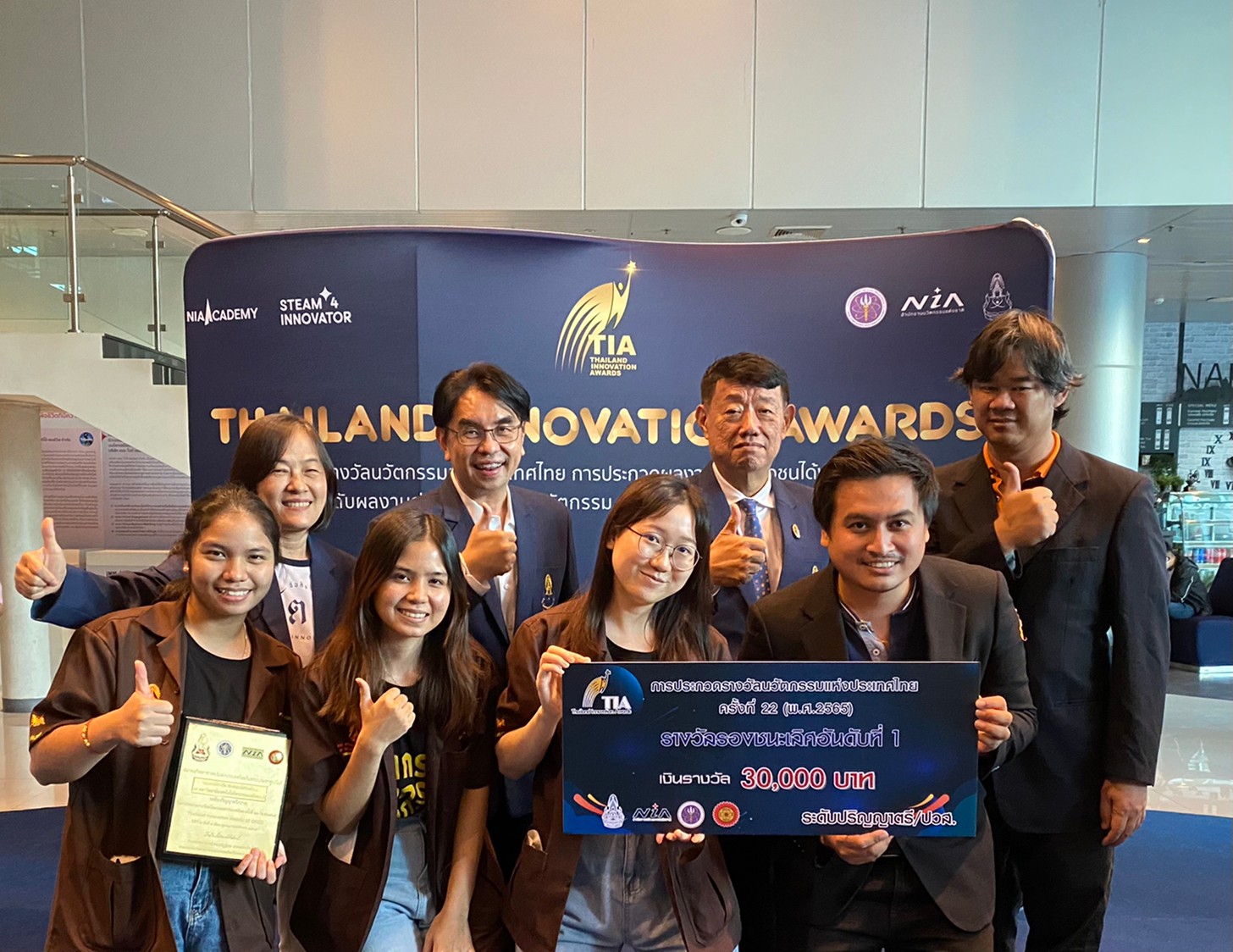
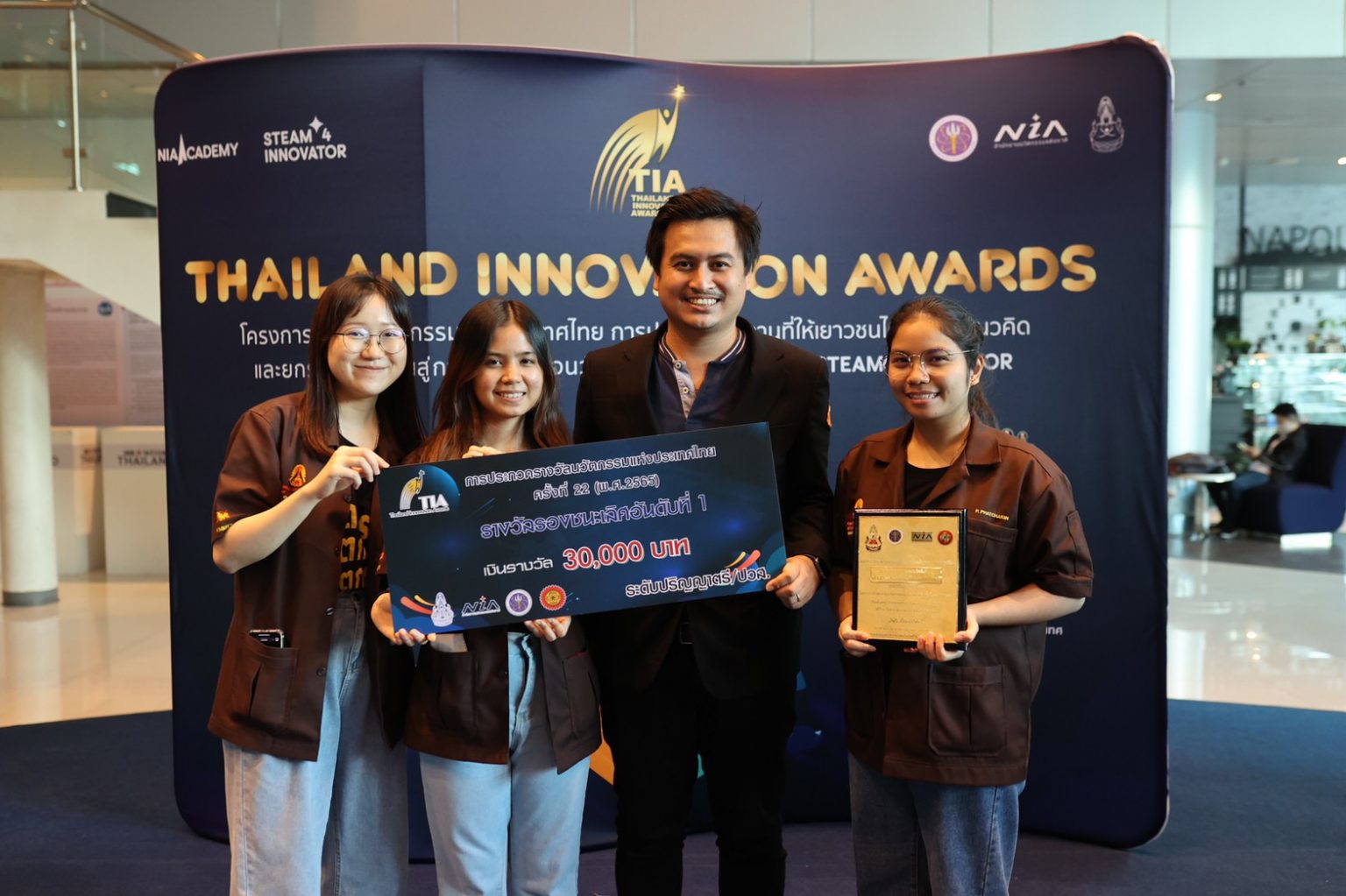
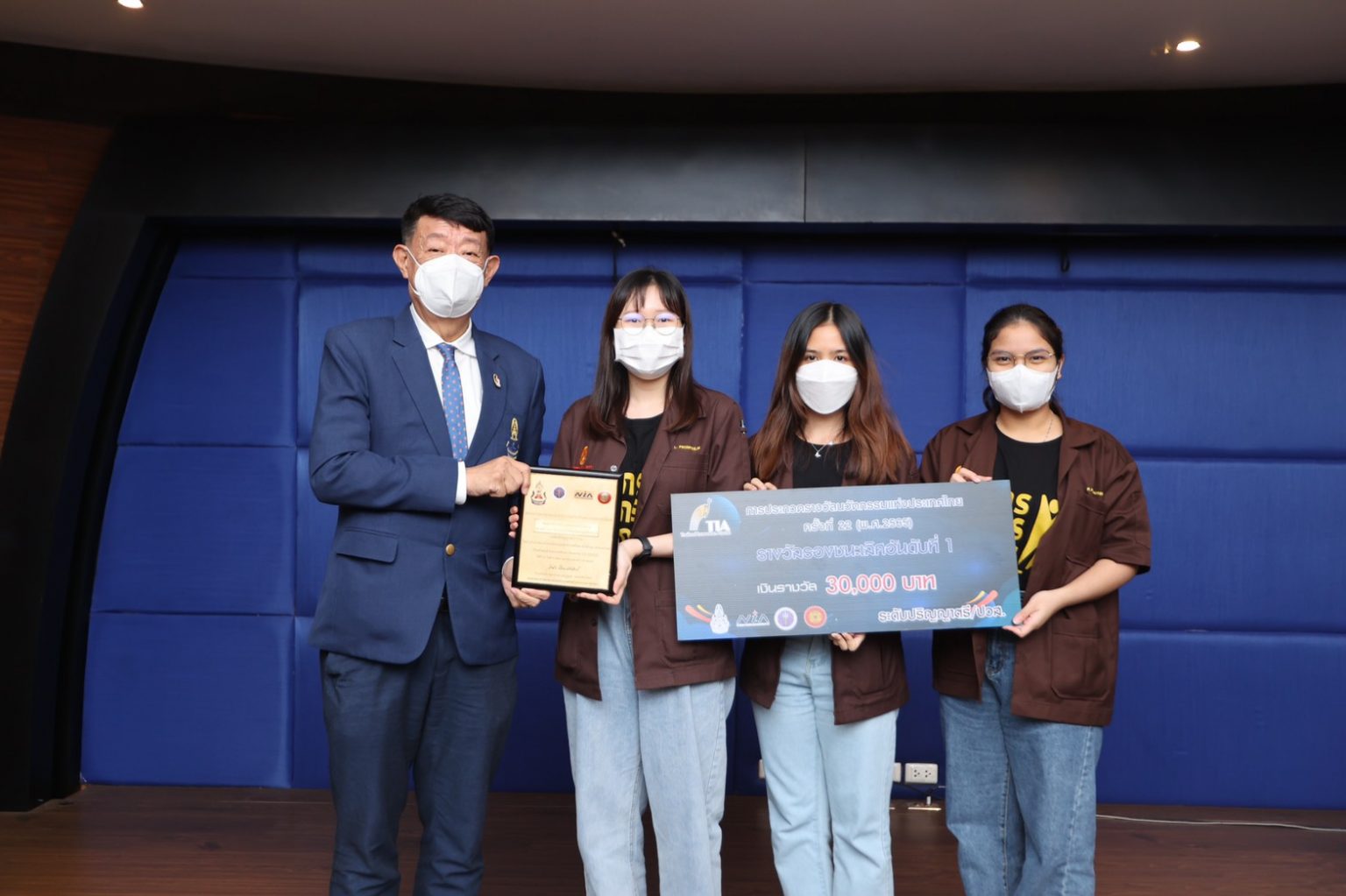
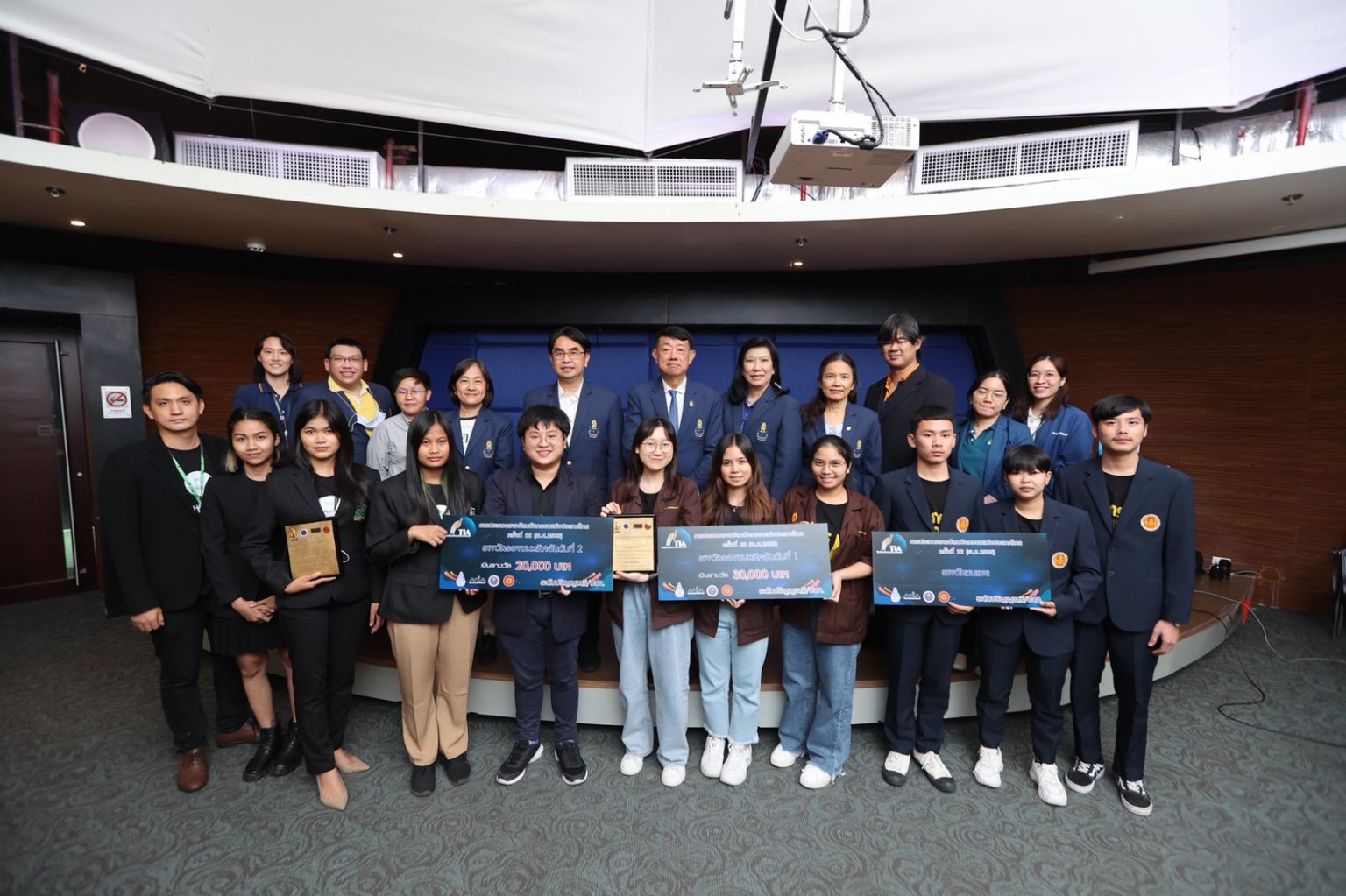
The students all agree that that participating in the TIA competition has provided them with a valuable opportunity to gain a broader perspective on their studies and understand the business aspects of innovation.
Dr. Yeampon firmly believes that this antimicrobial rubber glove embodies an innovative solution that not only bolsters the medical supply industry but also holds significant potential to stimulate the economy and drive exports. Furthermore, since natural latex serves as the primary raw material for production, this innovation also lends support to Thai rubber farmers